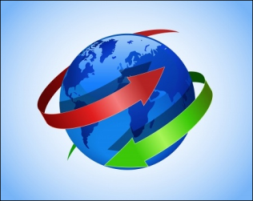
Servicescape: Meaning, Examples, Elements, Approach, and Roles
Servicescape: Meaning, Examples, Elements, Approach, and Roles
Servicescape: Meaning, Examples, Elements, Approach, and Roles
Servicescape is defined as the physical environment where a service can take place. It helps to analyze and identify the impact of a good environment on the service-based industry.
Servicescape deals in the settings where a service is consumed or delivered and the place where both the company and customer interactions with each other. It has a powerful impact on the assessment, perception, and response of the customer.
Table of Contents
Meaning of servicescape
Servicescape is a model that puts its onus on explaining the behavior of customers and clients within the service environment. It is a popular concept from Booms and Bitner that categorically states that ambiance has a direct impact on the customers.
When a consumer visits a place for a particular service or product, it is the surroundings that encourage or discourages him from following a set course of action.
It is the first aspect of service perceived by the client or customer and the impression that forms pave the way for further services.
The founders of Servicescape have explained the concept as a necessity if you are interested in improving your relationship with customers to felicitate better sales figures and larger revenues.
Aspects of servicescape
It is the role of a service provider to create an environment that will appeal to its customer and ease any discomfort. The important aspects of servicescape are-
1. Spatial layout and functionality
Spatial layout is about the way you arrange the furnishings, equipment and machinery, their shape and size and of course, the spatial relationship which exists amongst them. Functionality is about the ability of those items to accomplish customer satisfaction.
The aspect of spatial layout and functionality is much needed in self-service settings where the customers themselves handle the services.
You will generally not find employees or workers helping you to deal with them. Some important examples are the ATM, self-service restaurants, internet shopping, etc.
2. Signs, symbols, and artifacts
The sign is one of the most explicit signals that can communicate directly with a customer in a physical environment. These are prominently displayed on both exterior and interior of a place and generally act as communicators.
The signs can be used as labels like the name of a department and company, for a directional purpose like entrance and as rules for specific behavior like no smoking. Symbols and artifacts are also effective in giving the implicit cue to the reader.
Some important examples are artwork, floor coverings, photographs on the wall, and display of prominent artifacts that have symbolic meaning and manage to connect and communicate with its reader.
3. Ambient conditions
The background conditions of an environment like color, noise, music, sound, lighting, etc. are included in ambient conditions. These are important factors as they affect one or other of our five senses and can change the mindset and perception of a person.
In some cases, we hear a soothing background score to relieve stress. The effect of the strong scent, for instance of coffee or cookies, act as great tempting force and can easily draw people in. Remember, the ambient condition has proved itself as an influential aspect of servicescape.
Examples of servicescape
Impressions matter a great deal, and it is the ambiance that proves a deciding factor for most customers. Do you want to conduct any type of service at a place where you are not comfortable in the settings?
Sometimes the product value of two companies is the same, but what separates from others is its physical environment. A person will feel comfortable in one place and not so in another.
This can be a deal-breaker for him. For example, if you have the option of having dinner in a plain room with only basic amenities and the other place with the soothing ambiance, you will always choose the latter instead of the former.
Elements of servicescape
The various elements influencing servicescape are
Facility Exterior
- Landscape
- Exterior design
- Surrounding environment
- Parking
- Signage
Facility Interior
- Music
- Layout
- Equipment
- Air quality temperature
- Interior design
Others
- Virtual servicescape
- Brochures
- Employee dress
- Billing Statements
- Web pages
- Uniforms
- Reports
- Stationary
- Business cards
Roles of servicescape
The servicescape can play various roles like-
1. Facilitator
Servicescape acts as a facilitator to help people in their surroundings.
A well-designed place creates a pleasurable ambiance that relates to peace and harmony, whereas an inefficient design can cause frustration and pessimistic attitude in the minds of both employees and customers.
2. Socialiser
The servicescape design acts as a perfect socializer between both customers and employees.
It also helps to depict the expected behavior and roles like an employee can understand his position in a team through his cubicle placement, the quality of office furnishings and office assignments.
The design also suggests to customers where they are not allowed and where they are encouraged and welcomed through servicescape.
3. Package
The servicescape helps to convey the internal image through its outward appearance.
Product packages are one of its primary examples where you can easily know about the wrapped product by viewing and reading the matter. It acts as a visual metaphor for building a specific image.
4. Differentiator
Servicescape acts as a differentiator by separating designs of a company from its competitor. It helps to reposition a company and attract new segments.
Types of servicescape environment
The two types of service environment identified on servicescape are –
1. Lean servicescape
Designing this type of environment is straightforward and includes fewer interactions, elements, and spaces between employees and customers.
Some important examples are fast-food outlets, vending machine, and kiosks.
2. Elaborate servicescape
Designing this type of servicescape requires teams that are skilled in their work and are fully aware of the corporate vision and desired outcome. The elaborate servicescape includes multiple spaces, elements, and interactions between employees and customers.
Some important examples include restaurants, gym, swimming pool, bars, ocean liners, and international hotels.
Functions of servicescape
The functions of servicescape are as follows-
1. Image, differentiation, and positioning
Servicescape is an integral part of value proposition and service experience as it can attract attention very easily.
It delivers leisure as well as a contact service, for instance, in shopping malls, the staff and the environment jointly makes an effort to please its customers.
2. Facilitating service encounter and increasing productivity
designing plays an important part in servicescape if you want to facilitate service encounter and maximize productivity.
Several shopping malls have included small playhouse type of enclosures within its innovative design so that mothers can avail the services, keep their child over there, and peacefully continue with their shopping.
Approach of servicescape
The approach adopted by servicescape includes-
1. Direct observation
Trained observers are hired to observe and make a detailed note of the behavior and reactions of both the employees and customers. Depth interviews and direct observation has helped to explore the reactions and interactions of participants.
The findings have proved useful in comparing and redesigning the servicescape for better results.
2. Environment surveys
An environment survey asks both the employees and customers to put across their preferences and needs by answering predetermined queries in a particular format. It measures perceptions of three different factors like social condition, design, and ambiance.
The most important advantage of this survey is the interpretation and administration of the derived result to create better servicescape.
3. Photographic blueprint
The visual and photographic blueprint can help to know the point of view of a customer. It acts as a tool to assess the service process.
4. Experiments
Experimental methods help to assess particular reactions of both customer and employee regarding environmental changes. The real perceptions and reactions can be assessed and implemented through it very easily









